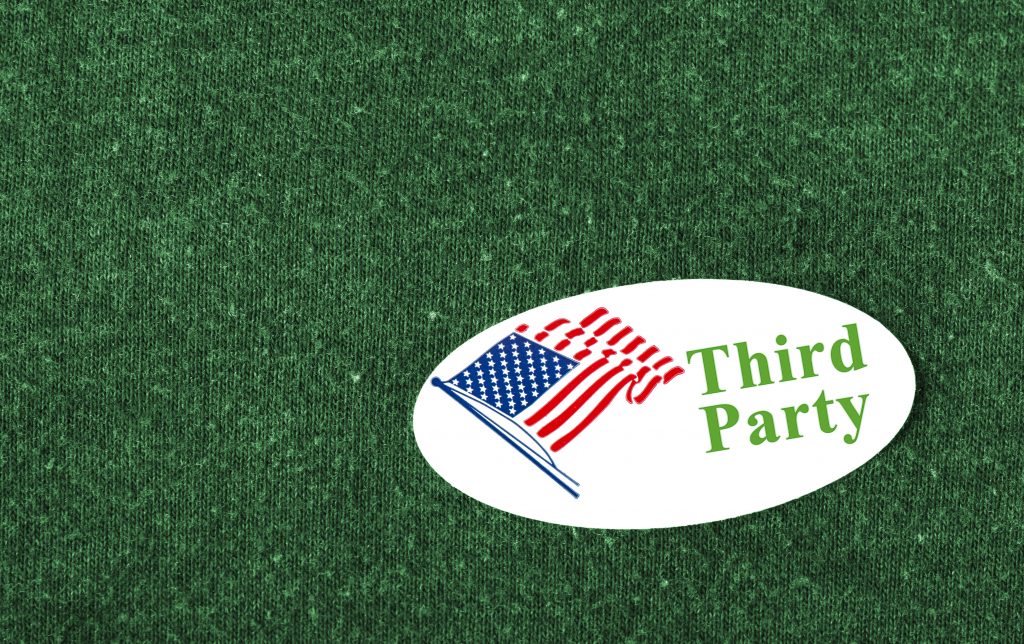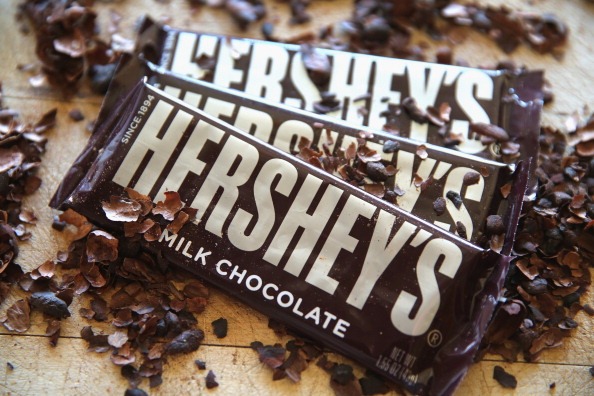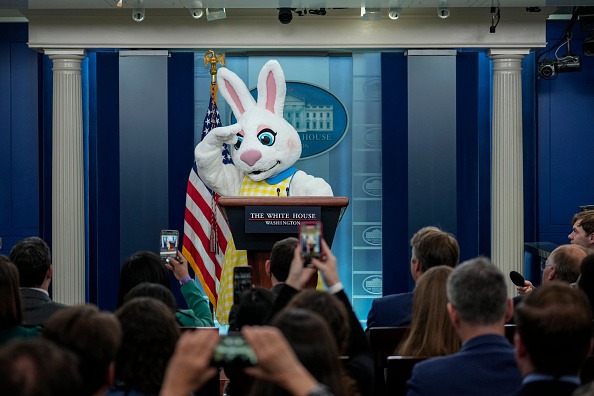A Short History of Third-Party Presidential Candidates in the U.S.
Third parties have a long history in the United States, but that doesn’t mean they’ve necessarily been successful, especially at the presidential level.

Political polarization in the United States has gotten so intense in recent years that many have been left to wonder whether the existing system is poised to undergo a tectonic shift.
Prevailing opinion suggests that change might arrive in the form of a new political party—a so-called “third party.” However, a quick review of the history of presidential elections in the United States seems to indicate otherwise.
Since the founding of the Republic, a third-party candidate has never won a presidential election.
For context, the two-party system was effectively born in 1796, when President George Washington announced his forthcoming retirement. During his two terms as president, George Washington ran and served in office as an independent, and therefore wasn’t technically affiliated with a political party.
The presidential election of 1796 was consequently the first in U.S. history in which political parties played a dominant role. Interestingly, it was also the first and only presidential election in which a president and vice president were elevated to their roles from opposing tickets.
Since then, the two largest political parties in the country, Democratic and Republican, have been instrumental in deciding every presidential election. In fact, during that span, candidates from each of the top two political parties have claimed first and second place in every presidential election, save one.
In that single instance, which occurred in 1912, a third-party candidate, Theodore Roosevelt, came in second to eventual winner Woodrow Wilson.
Interestingly, there are some parallels between that 1912 election and today, especially if former President Donald Trump runs for the White House again as a third-party candidate in 2024.
Similar to a hypothetical 2024 election featuring Trump, the 1912 presidential election featured former President Theodore Roosevelt, who ran under the third-party banner of the Progressive (aka “Bull Moose”) Party.
Theodore Roosevelt had previously been elected vice president under President William McKinley in 1900, and was elevated to the Oval Office after McKinley was assassinated in September of 1901.
Roosevelt then ran for office again in 1904 at the top of the Republican ticket and won handily with 56% of the popular vote. During his entire time in the White House (September 1901 – March 1909), Roosevelt was a member of the Republican Party.
Roosevelt had groomed his friend William Taft to succeed him, and President Taft was elected during the 1908 presidential election exactly as they planned.
However, Roosevelt later became frustrated with Taft’s brand of conservatism and decided to run against him in the 1912 Republican primary. Taft prevailed by a small margin, but instead of dropping out of the race, Roosevelt secured a spot on the 1912 ballot by running as a third-party candidate.
Ultimately, that decision split the Republican vote at the ballot box, and secured Democrat Woodrow Wilson’s ascension to the White House. Wilson won only 42% of the popular vote in 1912, while Roosevelt and Taft split 50% of the popular vote between them.
With Roosevelt winning 27% of the vote, as compared to Taft’s 23%, the 1912 election remains the first and only presidential election in history in which a third-party candidate was able to place above third.
The result of the 1912 election is instructive and helps illustrate why the two-party system remains in place today—even a relatively popular former president couldn’t break through on the wings of a third-party. Had Roosevelt and Taft instead negotiated a partnership, and combined their coalitions, it’s very likely the Republicans would have prevailed in 1912.
Unfortunately, Roosevelt’s declining age and health ultimately spelled the end for his nascent political movement, and the Progressive Party was officially dissolved shortly after Roosevelt’s death in 1919.
It should be noted that while no third-party candidate has ever won a presidential election, there have been several instances in history when one of the two dominant parties in the United States was replaced by an up-and-coming party.
Since 1796, there have been only six political parties in the United States that reached the apex of the political party mountain. Those six parties, and associated years in power, are listed below:
- Federalist Party (1789-1824)
- Democratic-Republican Party (1790-1828)
- National Republican Party (1824-1834)
- Democratic Party (1828-present)
- Whig Party (1834-1856)
- Republican Party (1856-present)
The above information is important because it shows that new political parties can find traction in the American political landscape, albeit rarely. There have only been four instances in the nation’s history in which a top political party was ultimately replaced by another. They are known, collectively, as political “realignments.”
For reference, the last major political realignment in the United States took place back in the early 1850s, when the Whig Party was usurped by the modern Republican Party.
Importantly, however, success in presidential elections by a new political party has only been secured after a realignment, not before. Meaning the new party had already become established as the first or second largest in the country, before fielding a successful presidential candidate.
History suggests that a new, or invigorated existing, third party would probably have to land a series of monumental successes before fielding a viable presidential candidate.
That’s not to say a third party couldn’t successfully emerge at some point in the future, only that it’s an extremely low probability bet.
Since Roosevelt garnered 27% of the popular vote in 1912, the next best showing by a third-party candidate was Ross Perot, who won roughly 19% of the popular vote in 1992.
Interestingly, 1992 was another election that saw the Republican vote split at the ballot box.
Together, Ross Perot and incumbent President George H. W. Bush garnered 56.5% of the popular vote in 1992. But those votes were split between them, like Roosevelt and Taft, allowing President Bill Clinton to win his first term with only 43% of the popular vote (note: Clinton’s total was very similar to Woodrow Wilson’s popular vote tally in 1912—42%).
The dubious track record of third parties in past presidential elections might be a key reason political rhetoric focusing on this topic has tapered off in recent weeks.
To follow all the probabilities associated with future political events, readers may want to monitor PredictIt.org going forward.
For daily updates on everything moving the financial markets, check out TASTYTRADE LIVE.
Subscribe to Luckbox in print and get a FREE Luckbox T-shirt! See SUBSCRIBE or UPGRADE TO PRINT (upper right) for more info.
Sage Anderson is a pseudonym. The contributor has an extensive background in trading equity derivatives and managing volatility-based portfolios as a former prop trading firm employee. The contributor is not an employee of Luckbox, tastytrade or any affiliated companies. Readers can direct questions about any of the topics covered in this blog post, or any other trading-related subject, to support@luckboxmagazine.com.



















